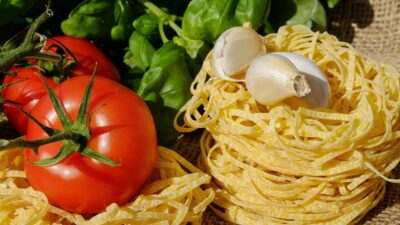Traveling the world can be a feast for the senses, but few experiences compare to the joy of exploring global cuisine. Food is the universal language that transcends barriers; it’s an embodiment of culture, history, and tradition. In this article, we embark on a culinary tour around the globe, discovering the unique flavors that each continent has to offer.
1. North America: Fusion and Tradition
Key Dishes:
- Tacos (Mexico)
- Poutine (Canada)
- Barbecue Ribs (USA)
North America boasts a rich culinary tapestry, woven with influences from Indigenous traditions, European settlers, and immigrant communities. In Mexico, vibrant tacos fill the streets, offering a myriad of fillings from slow-cooked meats to fresh vegetables. Canada’s poutine, a dish of fries topped with cheese curds and gravy, is a hearty indulgence that has become a cross-country favorite. Meanwhile, the smoky flavors of BBQ ribs from the southern states showcase the region’s deep-rooted culinary heritage.
2. South America: Spice and Diversity
Key Dishes:
- Ceviche (Peru)
- Asado (Argentina)
- Feijoada (Brazil)
South America is a continent bursting with vibrant, spice-laden flavors. In Peru, ceviche, fresh fish marinated in citrus juices and spices, is a refreshing delight that reflects the country’s coastal bounty. Argentina’s asado, a traditional barbecue, is a celebration of grilled meats, often enjoyed with family and friends. Brazil’s feijoada, a hearty black bean stew with pork, showcases the country’s rich blends of African and Portuguese culinary influences.
3. Europe: A Melting Pot of Heritage
Key Dishes:
- Paella (Spain)
- Ratatouille (France)
- Sauerbraten (Germany)
Europe is a continent where every corner brings a unique taste experience. The famed Spanish paella combines saffron-infused rice with seafood or meats, creating a colorful dish steeped in tradition. France’s ratatouille, a vegetable medley, exemplifies rustic cooking at its best; it harmoniously balances flavors while celebrating seasonal ingredients. In Germany, sauerbraten, a pot roast usually made from beef, is marinated in vinegar and spices, reflecting the country’s love for rich, comforting foods.
4. Africa: Rich Traditions and Unique Ingredients
Key Dishes:
- Bunny Chow (South Africa)
- Tagine (Morocco)
- Fufu (West Africa)
Africa’s culinary diversity is vast and deeply rooted in tradition. Bunny chow, a South African dish, features a hollowed-out loaf of bread filled with spicy curry, symbolizing the country’s multicultural heritage. In Morocco, tagine is a slow-cooked stew made in a conical pot, showcasing aromatic spices and local produce. West African fufu, a starchy staple made from cassava, yams, or plantains, is often served with rich soups and stews, highlighting the continent’s agricultural bounty.
5. Asia: Flavor Explosion
Key Dishes:
- Sushi (Japan)
- Dim Sum (China)
- Curry (India)
Asia is a culinary paradise, known for its bold flavors and intricate preparations. Japan’s sushi combines vinegared rice with a variety of fresh ingredients, reflecting a deep respect for seasonal produce. Chinese dim sum, a variety of small dishes served with tea, is a communal dining experience that showcases culinary skill and history. India’s diverse curries, bursting with spices and flavors, paint a picture of regional diversity and tradition.
6. Australia and Oceania: Fresh and Innovative
Key Dishes:
- Pavlova (Australia/New Zealand)
- Hangi (New Zealand)
- Kokoda (Fiji)
The cuisine of Australia and Oceania is influenced by its indigenous peoples and culinary innovators. The iconic pavlova, a meringue dessert topped with fresh fruits, is a staple in Australian and New Zealand celebrations. In New Zealand, hangi, a traditional Maori method of cooking food in an earth oven, reflects communal values and respect for the land. Fiji’s kokoda, a fish salad marinated in coconut milk and lime, captures the essence of fresh, tropical ingredients.
Conclusion: A Global Celebration of Flavor
Embarking on a culinary tour around the globe allows us to appreciate the diverse flavors, ingredients, and cooking techniques that have evolved over centuries. Each dish tells a story, revealing the culture, history, and soul of its people. Food is not just about sustenance; it’s an art form that connects us all. So, the next time you sit down to eat, think of the journey your meal has taken and savor the rich tapestry of flavors that the world has to offer.



